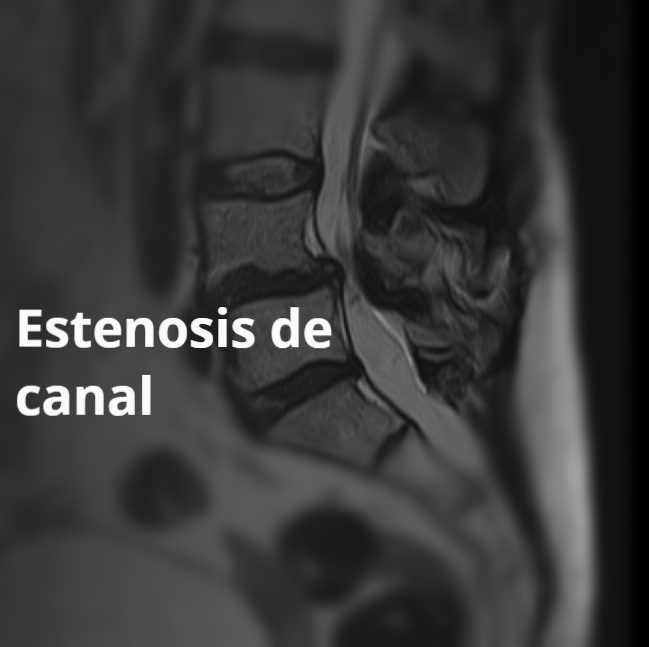Lumbar spinal stenosis
Lumbar spine osteoarthritis
Nowadays, a large number of elderly people suffer from spinal canal stenosis due to lumbar osteoarthritis.
What is lumbar spinal stenosis?
The spine is made up of vertebrae with a canal in their center: the spinal canal.
This contains the spinal cord and nerves. At the lumbar level, the spinal cord ends, and the canal contains only the nerves known as the "cauda equina," which innervate the lower limbs and perineum.
This canal is generally wide enough to easily transport all the nerve roots. Depending on the individual patient's constitution, or due to degenerative conditions such as osteoarthritis, a narrowing of the spinal canal may occur. This is known as lumbar spinal canal stenosis.
What are the symptoms of lumbar spinal stenosis?
Lumbar osteoarthritis will trigger compression of the nerve elements located within the spinal canal and will cause the following signs:
What treatment is indicated for lumbar osteoarthritis?
The symptoms of spinal canal stenosis can always be alleviated by conservative medical treatment, such as anti-inflammatories, analgesics, and injections, whether or not associated with physical therapy.
The determining element that can decide an intervention is therefore tolerance of this situation.
Only surgical intervention can increase the diameter of the spinal canal.
There's no major drawback to waiting. The risk of paralysis is rare, and postponing surgery doesn't alter the expected outcome. Surgery is often proposed when the patient has undergone extensive medical treatment without satisfactory results.
Does lumbar osteoarthritis require surgery?
Although there is no urgency to operate, surgery is indicated in the following cases:
What is spinal stenosis surgery like?
The purpose of surgery is to relieve compression of the nerve elements. To do this, it will be necessary to remove the tissue obstructing the canal (bone formations, joint surfaces, ligaments, and parts of the intervertebral discs).
We can help you with your spine problem
Solicita hoy tu consulta online gratuita para valorar tu caso.
💡 Remember: For more advanced treatments, you may need to visit one of our clinics in Spain.




